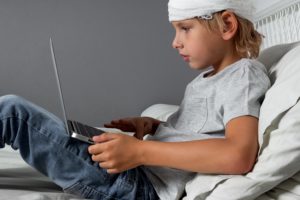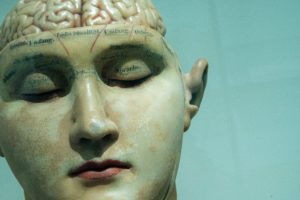As attorneys for people who have been injured through no fault of their own, one of the diagnoses that we regularly see among our clients is traumatic brain injury (TBI).

What are the symptoms of a TBI?
A traumatic brain injury, put simply, is an injury that affects how the brain works. There are a plethora of symptoms of TBI, which can be loosely categorized as:
- Physical impairments (headaches, vision or hearing deficits)
- Cognitive impairments (loss of memory, slow thinking);
- Emotional impairments (mood swings, depression).
Not only is it a specialized task to prove the full extent of brain injury symptoms in an adult, but extra considerations apply when a child has been the victim of a TBI.
The shocking statistics of TBI in children
Brain injury is the leading cause of disability and death in children and adolescents in the U.S. The CDC reports that the two age groups at greatest risk for brain injury are 0-4 and 15-19.
Each year approximately 62,000 children (ages 0-19) sustain brain injuries requiring hospitalization. Approximately 564,000 children are treated for brain injuries in hospital emergency departments and discharged. The CDC has estimated that 145,000 children and adolescents are living with lasting cognitive, physical, or behavioral effects of TBI.
Do children fare worse than adults when recovering from a TBI?
TBI in children and adolescents can be particularly insidious because in this population the brain has not yet completed its development. In the past, researchers hypothesized that the plasticity in a child’s brain would promote recovery by allowing healthy developing brain tissue to bypass damaged areas.

Unfortunately, more recent research suggests that this is not the case, and that instead injury to a child’s brain can in fact be more damaging than injury to an adult.
This is because following a brain injury, previously-learned information remains intact, while the capacity to build upon that information is jeopardized. In the case of younger children with a low baseline of learned information, the effect of limiting further brain development has the potential to be quite severe. By contrast, for adults whose brains had already completed development before the injury, the marginal difference in brain function may be less dramatic.
Another difference between TBI in children and adults is the enhanced potential for delayed diagnosis in children. Typically, an adult will be able to articulate and demonstrate the symptoms that he or she experiences following brain injury. A young child, by contrast, may suffer symptoms in cognition which are simply not apparent at that child’s developmental stage.

Unfortunately, delayed diagnosis has the potential to compound the problem by limiting the ability of families and healthcare providers to provide effective treatment modalities.
For all of these reasons, personal injury cases involving traumatic brain injury to children require special attention. If you believe that your child has suffered from TBI, call your pediatrician or hospital immediately. Professionals need to identify the client’s full measure of harms and losses, and effectively advocate for the child. At Allen & Allen, we proudly advocate for children who have suffered these terrible injuries due to the negligence of another.
If you or a loved one have suffered a traumatic brain injury through no fault of their own, the traumatic brain injury attorneys at Allen & Allen offer free consultations and may be able to help you pull through this difficult time. Call today at 866-388-1307.




